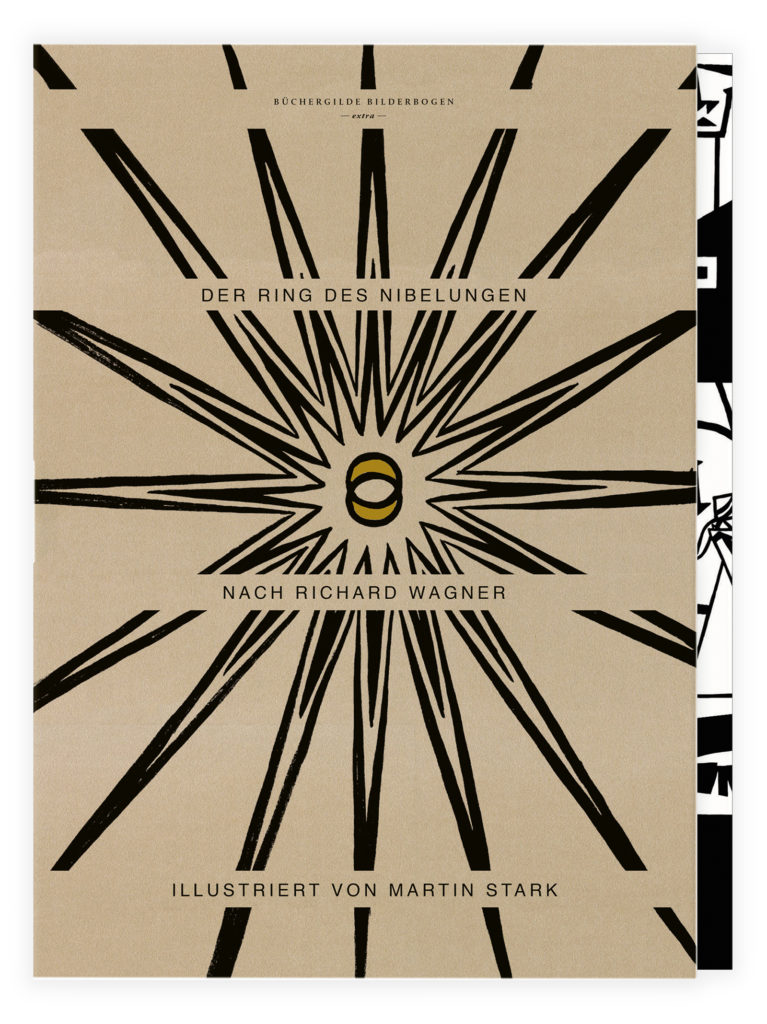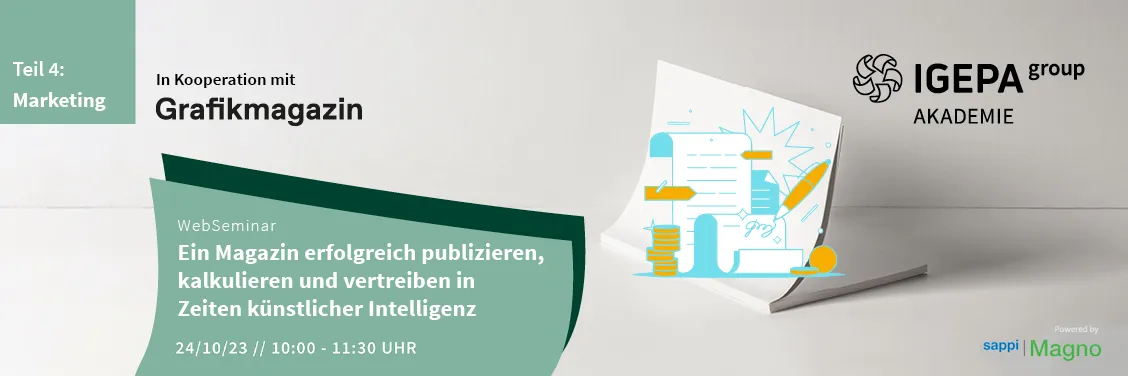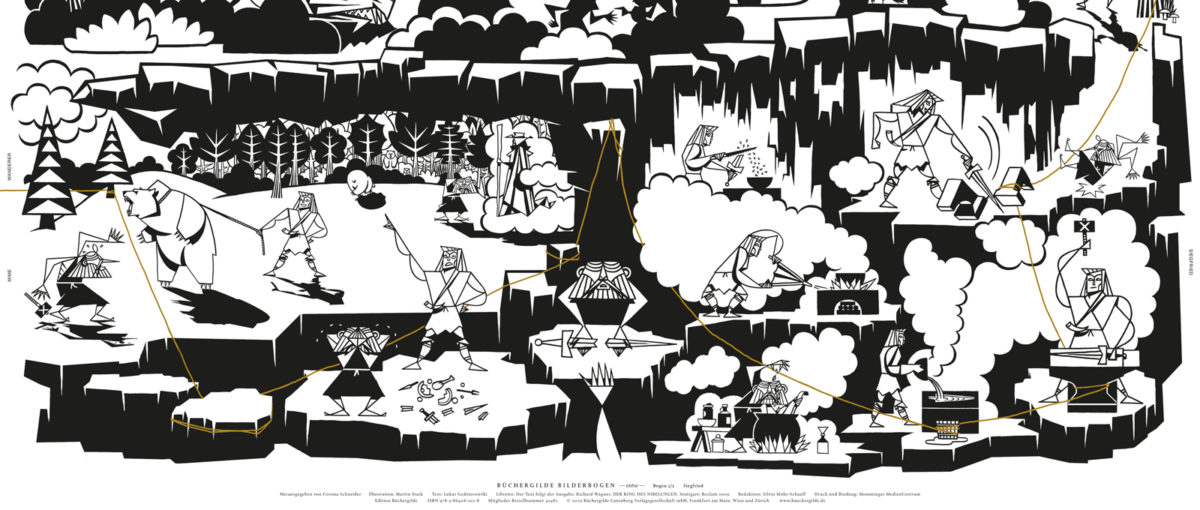Man mag von Richard Wagner halten, was man möchte, unbestritten bleibt, dass sein Werk enormen Einfluss auf andere Künstler hatte und noch heute hat. Im Bilderbogen »Der Ring des Nibelungen« geht der Illustrator Martin Stark auf Entdeckungsreise durch das Wagner-Universum und erschließt dem Betrachter das Werk auf ungewohnte Weise. Und gerade in der reizvollen Kombination von illustrativer und typografischer Gestaltung und der gelungenen Verknüpfung von Form und Inhalt zeigt sich erneut, was für ein großartiges Erzählformat der Bilderbogen darstellt und ein völlig neues Seh- und Lese-Erlebnis schafft. Wir sprachen mit dem Illustrator Martin Stark über das ungewöhnliche Projekt.
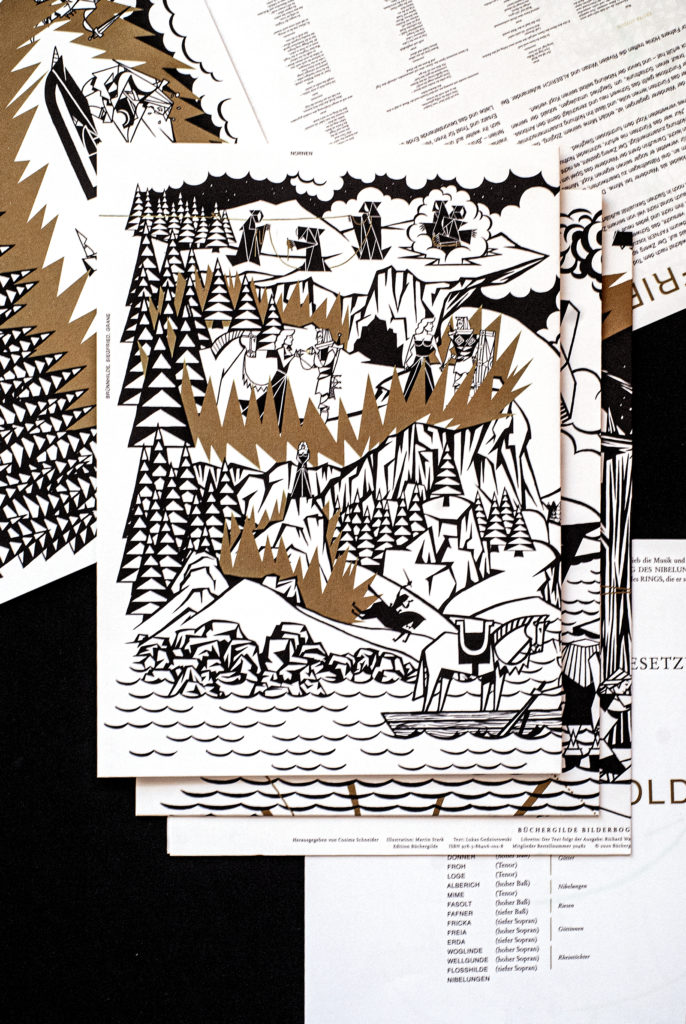
Wie haben Sie sich dem Thema genähert, waren Sie mit dem Ring schon vorher vertraut?
Neben dem »Tannhäuser«, den ich mal während meiner Schulzeit durchgenommen hatte, kannte ich von Richard Wagner eigentlich nur den »Walkürenritt« aus dem Film »Apocalypse Now«, daher fand ich es sehr spannend und eine gute Gelegenheit, mich mit dem gesamten »Ring des Nibelungen« zu befassen, als mir angeboten wurde ihn zu illustrieren. Bevor ich mir den Ring vollständig angehört habe, habe ich mich zunächst nur mit dem Text beschäftigt und mich dabei langsam an den Inhalt herangetastet. Zuerst kamen die Inhaltsangaben bei Wikipedia dran, danach die Handlung in chronologischer Reihenfolge märchenhaft nacherzählt in einem Buch Rolf Stemmle, was für das Verständnis sehr hilfreich war, als ich mich dann endlich an die Libretti von Wagner herangetraut habe. Eine Aufführung des Jahrhundertrings habe ich mir dann erst nach Ende des Projekts angeschaut, um bei den Illustrationen nicht zu beeinflusst von den Inszenierungen zu sein.
Wie sind Sie an die Umsetzung gegangen und wie haben Sie priorisiert? Das ist ja ungeheuer viel Stoff für relativ wenig Platz.
Zur Inspiration hatte ich einen Ausstellungskatalog über den historischen Bilderbogen, der vom 16. bis 19. Jahrhundert das Massenmedium seiner Zeit war. Die Bogen, die von Morden und anderen Verbrechen handelten, waren dabei so aufgebaut, dass sich auf einem formatfüllenden Hintergrund der Tathergang in mehreren Szenen abspielte, wobei die Abfolge der Szenen nicht unbedingt von links oben nach rechts unten zu betrachten war, sondern sich in unterschiedlichen Anordnungen kreuz und quer über das Blatt verteilte, und nur mit Hilfe eines kurzen Textes am Blattrand zu entziffern war. Dieses Konzept wollte ich auf den Ring übertragen und die Schlüsselszenen jedes der vier Abende auf jeweils einem Bogen vor einem einzigen kulissenartigen Hintergrund zusammenfassen. Die Figuren wollte ich dabei so einfach und schlicht wie möglich gestalten, als Kontrast zur bombastischen Musik und dass sie bei der Fülle an Szenen immer gut wiederzuerkennen sind und man ihnen einfach folgen kann. Als weiteres Stilmittel kam zu den schwarzweißen Illustrationen noch die Farbe Gold hinzu, die spärlich eingesetzt meist nur das Nibelungengold, den Ring und das Feuer hervorhebt. Silvio Mohr-Schaaff, der Pressesprecher der Büchergilde und Initiator dieses Projekts, kam dann auf die glorreiche Idee, die einzelnen Szenen zum besseren Verständnis mit dem Schicksalsfaden der Nornen zu verbinden, der sich durch alle Bogen zieht, bis er dann am Anfang des Rheingoldes reißt, was auch inhaltlich sehr gut passte. Man hat hier wortwörtlich einen roten, beziehungsweise goldenen Faden, dem man folgen kann.


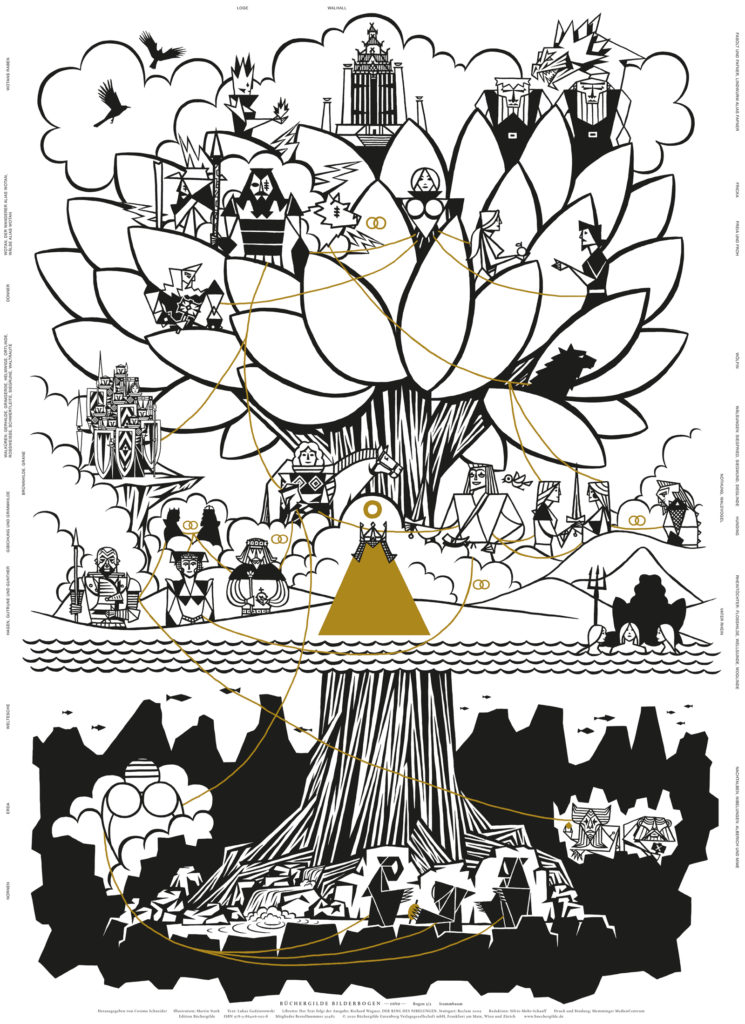
Wie viel Einfluss hatten Sie auf die letztendliche Umsetzung und Form des Bilderbogens?
Wir haben die Bogen im Team konzipiert, wobei Silvio Mohr-Schaaff als Wagnerkenner den Stammbaum des Bonusbogens ausarbeitete und mir auch sonst immer wertvolle Tipps geben konnte und Cosima Schneider, die Herstellungsleiterin der Büchergilde, die typografische Gestaltung der Rückseiten übernahm. Auf den Vorderseiten befinden sich die Illustrationen und nur die Namen der handelnden Personen sind bei ihrem jeweils ersten Auftritt um den Rand herum verteilt, während sich auf den Rückseiten eine kurze flotte, von Lukas Gedziorowski verfasste Inhaltsangabe, sowie das vollständige Libretto des jeweiligen Abends befindet. Die Schriftgröße des Librettos ist dabei natürlich sehr klein geraten, soll aber in erster Linie die schiere Menge Text, die an einem einzigen Abend gesungen wird, verdeutlichen. Außerdem erinnert die Gestaltung an alte Schallplatten, bei denen die Texte auf der Innenhülle klein abgedruckt waren.
Das publizistische Format des Bilderbogens ist ja recht ungewöhnlich. Was hat Sie daran gereizt, beziehungsweise was konnten Sie hier tun und ausleben, was sonst nicht geht?
Der Bilderbogen besteht aus einem oder mehreren gefalteten Druckbogen im einem Schuber und bietet für Illustratoren ein einzigartig großes Format, das man frei gestalten kann, um eine Handlung auf eine neue Weise abzubilden und dabei ganz anders vorzugehen als bei der herkömmlichen Buchillustration. Dadurch, dass ich fünf Bogen und drei unterschiedlich große Formate zur Verfügung hatte, wobei das größte für die »Götterdämmerung« ein ganzer Druckbogen war, konnte ich jeden Bogen anders falten und gestalten, mal im Hoch- oder Querformat und manchmal muss der Bogen gedreht werden, damit man der Handlung folgen kann. Sie ist dabei so aufgebaut, dass sie mit jedem Auffalten Stück für Stück enthüllt wird, bis man am Schluss den gesamten Inhalt eines Abends vor sich ausgebreitet hat, wie auf einem großen Poster.
Was mir auch sehr gefällt, ist hier der Kontrast zwischen der illustrativen Vorder- und der typografischen Rückseite und dass der Betrachter mit den Bogen anders als mit einem Buch interagieren muss, indem er sie entfaltet, dreht und umwendet, zwischen den Bildern vorne und Texten hinten hin- und zerspringt und die einzelnen Bogen zu einem großen Ganzen zusammenlegen kann, wobei sie durch den Nornenfaden miteinander verbunden werden.
Was ich auch sehr spannend fand, war wie Wagner Teile der nordischen Sagenwelt und der Nibelungensage mit eigenen Elementen zu einem neuen ausufernden Epos verwoben hat, das nicht nur kompositorisch komplett neue Wege ging, indem er unter anderem jeder Figur ihr eigenes Thema gab, und das so vor allem im Filmsoundtrack bis heute weiterexistiert, sondern auch inhaltlich, wie bei den heute üblichen Crossover-Geschichten im Comic. Ich hoffe, der Bilderbogen kann als leichter Einstieg in den Nibelungenring dienen, als auch dazu, sich dessen Inhalt bildlich wieder in Erinnerung zu rufen, als weitere neuartige Facette in der Fülle der Veröffentlichungen zu diesem Thema.
